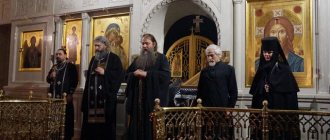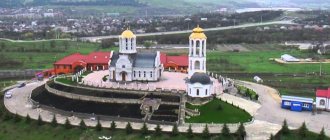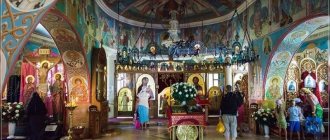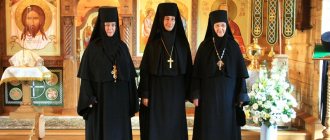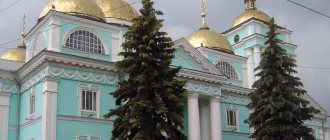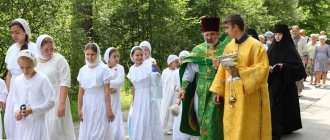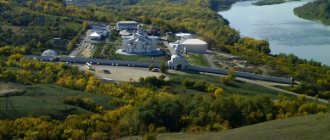Mir
Russia Saratov Region Saratov Alekseevsky Saratov Convent Map loading in progress...
{"format":"leaflet","minzoom":false,"maxzoom":false,"limit":50,"offset":0,"link":"all","sort":[""], "order":[],"headers":"show","mainlabel":"","intro":"","outro":"","searchlabel":"\u2026 \u0441\u043b\u0435\ u0434\u0443\u044e\u0449\u0438\u0435 \u0440\u0435\u0437\u0443\u043b\u044c\u0442\u0430\u0442\u044b","default":"","import-annotation":false,"width ":"auto","height":"350px","centre":{"text":"","title":"""link":"""lat":51.559719000000001187800080515444278717041015625,"lon": 45.980536999999998215571395121514797210693359375,"icon":""},"title":"","label":"","icon":"","lines":[],"polygons":[],"circles":[ ],"rectangles":[],"copycoords":false,"static":false,"zoom":8,"defzoom":14,"layers":["OpenStreetMap"],"image layers":[] ,"overlays":[],"resizable":false,"fullscreen":true,"scrollwheelzoom":true,"cluster":false,"clustermaxzoom":9,"clusterzoomonclick":true,"clustermaxradius":80, "clusterspiderfy":true,"geojson":"","clicktarget":"","showtitle":true,"hidenamespace":false,"template":"","userparam":"","activeicon": "","pagelabel":false,"ajaxcoordproperty":"","ajaxquery":"","locations":[{"text":"\u003Cb\u003E\u003Ca href=\"/palomnik/%D0% 90%D0%BB%D0%B5%D0%BA%D1%81%D0%B5%D0%B5%D0%B2%D1%81%D0%BA%D0%B8%D0%B9_%D0%A1% D0%B0%D1%80%D0%B0%D1%82%D0%BE%D0%B2%D1%81%D0%BA%D0%B8%D0%B9_%D0%B6%D0%B5%D0% BD%D1%81%D0%BA%D0%B8%D0%B9_%D0%BC%D0%BE%D0%BD%D0%B0%D1%81%D1%82%D1%8B%D1%80% D1%. 32\u0441\ u043a\u0438\u0439 \u0436\u0435\u043d\u0441\u043a\u0438\u0439 \u043c\u043e\u043d\u0430\u0441\u0442\u044b\u0440\u044c\"\u003E\ u0410\u043b\u0435\u043a\ u0441\u0435\u0435\u0432\u0441\u043a\u0438\u0439 \u0421\u0430\u0440\u0430\u0442\u043e\u0432\u0441\u043a\u0438\u0439 \u0436\u0 435\u043d\u0441\u043a\u0438\ u0439 \u043c\u043e\u043d\u0430\u0441\u0442\u044b\u0440\u044c\u003C/a\u003E\u003C/b\u003E\u003Chr /\u003E\u003Ca href=\»/palomnik/%D0%A1 % D0%B2%D0%BE%D0%B9%D1%81%D1%82%D0%B2%D0%BE:%D0%90%D0%BD%D0%BD%D0%BE%D1%82%D0 %B0%D1%86%D0%B8%D1%8F\" title=\"\u0421\u0432\u043e\u0439\u0441\u0442\u0432\u043e:\u0410\u043d\u043d\u043e\u0442\u0430\ u0446\u0438\u044f\»\u003E\u0410\u043d\u043d\u043e\u0442\u0430\u0446\u0438\u044f\u003C/a\u003E: \u043f\u0440\u0430\u0432\u043 e\u0441\u043b\u0430 \u0432\u043d\u0430\u044f \u0436\u0435\u043d\u0441\u043a\u0430\u044f \u043e\u0431\u0438\u0442\u0435\u043b\u044c, \u043e\u044 1\u043d\u043e\u0432\u0430\ u043d\u043d\u0430\u044f \u0432 \u043a\u043e\u043d\u0446\u0435 XIX \u0432\u0435\u043a\u0430. \u0412\u043e\u0437\u0432\u0440\u0430\u0449\u0435\u043d \u0426\u0435\u0440\u043a\u0432\u0438 \u0432 1991 \u0433\u043e\u0434\ u0443. \u041f\u0440\u0438 \u043c\u043e\u043d\u0430\u0441\u0442\u044b\u0440\u0435 \u0438\u043c\u0435\u0435\u0442\u0441\u044f \u0442 \u0440\u0430\u043f\u0435\u0437 \u043d\u0430\u044f \u0438 \u0433\u043e\u0441\u0442\u0438\u043d\u0438\u0446\u0430 \u0434\u043b\u044f \u043f\u0430\u043b\u043 e\u043c\u043d\u0438\u043a\u043e \u0432.","title":"\u0410\u043b\u0435\u043a\u0441\u0435\u0435\u0432\u0441\u043a\u0438\u0439 \u0421\u0430\u0440\u0430\u0442\u043e\ u0432\u0441 ""link":"", "lat" :51.559719000000001187800080515444278717041015625,»lon»:45.980536999999998215571395121514797210693359375,»icon»:»»}],»imageLayers»:[]}
51.559719; 45.980537
Russia, Saratov, Zamkovy proezd, 18
Saratov, Saratov region 410009
Russia
Telephone:
8 917 301 10 72
Email:
Alekseevsky Saratov Convent
- an Orthodox convent founded at the end of the 19th century. Returned to the Church in 1991. The monastery has a refectory and a hotel for pilgrims.
History of the monastery
The place where the St. Alexeevsky Convent (Saratov) is now located was acquired by Bishop Afanasy (Drozdov) in 1848. Originally intended for the bishop's dacha, the total area was 16 hectares. Over time, a men's monastery was formed at the resting place, and the place itself received the name Upper Monastyrka. At the end of the eighties of the nineteenth century, a temple was built on the territory of the monastery in honor of St. Alexis (Metropolitan of Moscow and All Rus').
The monastery's possessions expanded to 22 hectares, they were surrounded by green gardens, a pond and a fountain were equipped. A spring was found on the mountainside, ceramic pipes were brought to it, and the water was used for the needs of the inhabitants and laity. Saratov grew over time, and the monastery became part of the city, accessible by public transport.
Interesting facts and legends
Legend claims that the name of the village of Alekseevka was given in memory of the Moscow Metropolitan and Wonderworker Alexy, who in the 14th century. passed through these places on his way to the Golden Horde. The monastery, although formally the youngest in the Saratov diocese and region, nevertheless strives to be the spiritual successor of the church in which Matins and the Liturgy of St. John of Kronstadt.
There are many memories associated with this visit:
- The carriage in which St. John was taken from the pier, located 2 km from the village, and was met by all the residents of Alekseevka, who then numbered about 3,000 people.
- During the service in the Church of St. John sang in the choir with the singers.
- Next to the monastery there is an estate that belonged to Count Vorontsov-Dashkov, in which, after the revolution, a colony for children named after them was established. John Reed. Then the building was transferred to the state farm, which was a subsidiary farm of the Balakovo Machine-Building Plant.
- Church psalmist V. Piksanov, who was shot in 1938, was canonized as a new martyr.
Alekseevka is the birthplace of Heroes of the Soviet Union pilots V. Trubachenko and L. Groshev. The famous political figure V. Volodin, the athlete and Olympic medalist V. Kazantsev, as well as the Hero of the Russian Federation and academician of the Russian Academy of Sciences V. Pashin were born here - a school in Alekseevka is named after him.
Devastating decline
In 1918, the Alekseevsky monastery was alienated from the church, and its premises and land began to be used for the needs of the new state. Reconstruction and destruction began in the temple. The belfry and all five domes were demolished, the garden was almost cut down, the water supply system, fountain and pond were destroyed, only the spring remained intact. In the thirties, a tuberculosis sanatorium for children was located here. In the forties, the land of the monastery was given over for the development of dachas.
In the late sixties, the premises of the former monastery housed the offices of a gynecological hospital. In the eighties, the clinic, along with its buildings and territory, came under the jurisdiction of the Saratov health department. Before the restructuring itself in 1985, there were plans to build a ski resort, and in the long term it was planned to build laboratory and engineering buildings. But time and the consciousness of people took another turn, and the plans failed - the revival of Orthodoxy in the country began.
New temple
The first attempts to return the monastery land to the fold of the Saratov diocese were made in 1990; ownership was finally secured in 1991. During this period, the charter of the Alexievsky monastery was registered, the first services took place in 1992 and fell on the holy holiday of Easter.
The idea of reviving religious life in the monastery had support among the laity of the Saratov diocese: many actively worked on the restoration of the temple and made donations. Bells appeared at the temple again, and work began on the revival of the monastery garden.
In 1997, the men's monastery ceased to exist, and in its place the St. Alekseevsky Convent (Saratov) was formed. By the beginning of 2008, construction of a new church was completed, consecrated in honor of the Smolensk Icon of the Mother of God “Odigiriya”. There are four altars consecrated in the monastery, each of which is dedicated to the saints of Orthodox Christianity.
Historical description of the Holy Ascension Convent.
1865 – 1919
Dubovka Posad Since ancient times, Dubovka Posad has been adorned on the banks of the Volga. It was an important transport hub, a center of economics and trade, at one time ahead of Tsaritsyn and Kamyshin. Merchants, craftsmen, and peasants lived here. Goods were brought here from the northern provinces of Russia, and Dubov cabbies transported them to the Don and the Caucasus. The important geographical and economic position attracted people from all over the country to Dubovka. For 30 years from 1833 to 1864. its population increased two and a half times and amounted to 12,440 people (the number of Tsaritsa at that time did not yet reach seven thousand inhabitants). Along with the Orthodox Christians, many Molokans and representatives of other non-traditional beliefs came to the posad. All this forced the Dubov priests to be more attentive to the spiritual needs of the residents, to prepare more carefully for sermons, and to reflect on the ways of spiritual development of society. And in response to the demands of the time, God’s providence sent here a wonderful man, one of the best priests of Russia at that time.
Assumption Cathedral in Dubovka 19th century The decoration of the town was the nine-domed Assumption Cathedral located on Moskovskaya Street. In this temple from 1847 to 1850. and from 1853 to 1876 Archpriest John Alekseevich Pokrovsky served. A modest man of a remarkable life, strewn with thorns, distinguished by his witty sermons and special love for suffering humanity. He was sensitive to everyone, everyone came to him: Molokans and all kinds of sectarians, and he, always responsive to the grief of others, did not let anyone go without all possible help, so the entire population of Dubovka loved and respected him. prot. John of PokrovskyArchpriest John of Pokrovsky and tradesman Matvey Posokhin sent a letter to the Most Reverend Ioannikiy, Bishop of Saratov and Tsaritsyn, about the creation of a women's community. In the letter of appeal we read verbatim: “Archpriest John of Pokrovsky and tradesman Matvey Posokhin, for the benefit of the local steppe region, want to “instill piety through the founding of a nunnery.” Father John, especially after the death of his wife and the death of his only son, led an ascetic life; he was spiritually nourished by the elders: Father Adrian from the Southern Hermitage of the Yaroslavl province and Father Peter from the Jerusalem settlement of the Tver province. Father Peter himself, through a messenger, gave his blessing for the construction of the monastery. The holy blessing of His Eminence Ioannikis was also received. When the community was established, the Dubovsky city government promised to allocate as much land as needed for the holy monastery free of charge, and to give residents everything they needed. In 1864, Father John, using his personal funds, bought an estate with two ponds, in the steppe on a hill five miles from the Dubovka settlement.
A warm church with a cell building, 1866. The monastery under construction experienced a lack of drinking water, for which it was necessary to walk far. Then a miracle occurs, described at the beginning of the 20th century by P.M. Posokhin. “I remember my father, the archpriest, took me, still a boy, for a walk, and we rode with him in a horseback ride to the steppe to the place where he wanted to found a monastery. The archpriest’s father was preoccupied with the thought of water; it was difficult to get it in this place. Being a man of deep faith, hoping for help from above, he left me in the long distance with the coachman, and he himself walked a few steps to the side; He knelt down and, raising his hands to the sky, prayed earnestly and for a long time, shedding tears. And when my patience was exhausted from the long wait, I came out of the long hut and saw the archpriest’s father praying (oh, great miracle!), no longer standing on the ground, but slightly raised - as if in the air. Out of fear and excitement, I screamed, and because of my scream, he finished his prayer and, comforting me kindly, ordered me to mark with a peg the place where he prayed this time. Subsequently, at this place where he prayed, well No. 1 was dug with pleasant-tasting water, which exists to this day.”
Head of the community mon. Vitaly I. In the fall of 1865, Father John consecrated the site for the first cell. The first nuns, five in number, gathered. The first head of the monastic community was, at the choice of Father John, the ryassophore novice Vitaly from the city of Bezhetsk. Nothing was built or determined in the community without the knowledge of the archpriest’s father; he was the trustee and builder of this young community. He was like a child-loving father to his children, rejoicing at the prosperity of the new monastery. However, his joy was not particularly long-lasting, for with every good deed that a person does with the help of the Lord, the enemy of the human race - the devil - also does not sleep and does his job: through weak people he instills discord and enmity in the sisters gathered in the community. A distant relative appointed to the monastery, Fr. John's father Pavel Pavilionov separates with a small party of seven sisters, causing a lot of harm for the archpriest's father. Denunciations were sent to Saratov to His Eminence Bishop Tikhon (Eminence Ioannikis had already been transferred), and although the denunciations were not thorough, although another party of sisters refuted these denunciations, Father Archpriest Tikhon was prohibited from serving in the monastery church and visiting the community. Then there were denunciations that the abbess, nun Vitaly, was not watching over the sisters, that they were going to their father, Archpriest John, and His Grace sent another mantle nun, Maria, from the Saratov monastery to the monastery, and sent Vitalia to the Saratov monastery as a supervisor. Under the robes of the nun Maria, unrest and troubles intensify; a fire breaks out in the monastery in the cell building where the church was located. Many sisters, enduring attacks and hardships, disperse from the community to the townspeople, and, deprived of their monastery, live in Dubovka in tears and great sorrow. Father Archpriest, grieving for his monastery and seeing that peace does not settle in the monastery, sends two active novices Anna Alekseevna Evlampieva (later schema-nun Agnia) and Pelagia Vasilievna Doroshenko to personally ask for the protection of Empress Maria Alexandrovna, wife of Emperor Alexander II, who said that “ everything will be according to your request, go and reassure the sisters.” Soon a Decree was sent to the name of the Most Reverend Tikhon, which ordered to immediately send a well-behaved and active nun to this community, and to gather into the community all the sisters who had dispersed. Abbess Vitaly II was appointed from the Saratov convent of Vitaly II. By this time, Father Archpriest was becoming increasingly weaker in health and again repeated his prophetic words: “You will live and see, but I will go into eternity. When the Lord arrives and the paper arrives that will justify me, then I will no longer be here, I will be in eternity, where truth alone reigns.” All these words later came true, as Father said. Nun Vitaly, who arrived in August 1876, found the monastery in complete disintegration: the sisters, who had temporarily left the community in Dubovka, met Mother Vitalia with great tears and asked for her protection, so that she would establish peace and silence between them and tame all discord and strife. Father John lived his last minutes. Soon after the arrival of Mother Vitalia, he died - in October from 28 to 29 at 12 o'clock at night in 1876 at the 60th year of his life. His Grace Tikhon was traveling at this time to Dubovka to consecrate the Church of the Resurrection. It was touching to see when Vladyka, having arrived at the house of the archpriest’s father, approached the ashes of this great sufferer, bowed to the ground, asking him for forgiveness for the insults caused to him. A great crowd of people attended the funeral service, which was performed by His Grace Tikhon himself with a whole host of priests. Father John was first buried near the altar of the first church; by 1914, the grave was covered with a cast-iron slab and was already located in the middle of the warm church. Continuation The first task of the new abbess, nun Vitalia, was to repair and build the burnt building and consecrate the temple.
Ig. Vitalia with the orphanage students. As far as possible, Mother Vitalia pacified the sisters after their discord, tried to instill love and peace in them. When everything in the monastery settled down and calmed down, mother abbess began further work: a second well with excellent drinking water was dug, a place was allocated for a cemetery, which had not been in the monastery for 12 years, since during this time no one was here was dying. They say that this circumstance, that is, that no one in the community would die before the founder of the monastery, was predicted by him himself, which was incidentally heard by the novice Akilina Boykova, who entered the monastery on August 28, 1870 (later Abbess Augusta). Mother Vitalia completely devoted herself to the restoration and decoration of this destroyed community: the construction of a cathedral was conceived. On May 29, 1880, on the Feast of the Ascension of the Lord, in the presence of His Grace Tikhon, a cathedral was founded in honor of the Ascension of the Lord. The cathedral took five years to build, and when it was finished in rough form, a misfortune happened: the main dome collapsed inside the temple at night.
Ascension Cathedral Another architect was invited. And with the blessing of the Bishop, the place was consecrated again, and the construction of the cathedral began again. At the age of three they finished the cathedral in rough form. In 1891, the consecration of the main altar in the name of the Ascension of the Lord was scheduled for the 19th of September. During the years of nun Vitalia's leadership, the following buildings were erected: a priest's house, a bakery building, a carpet workshop, an abbot's building, and a building for an orphanage. At this time the monastery priest was Fr. Feodosius Vasilyevich Nikolsky, as a zealous lover of church singing, at the request of Mother Vitalia, he organized a wonderful monastery choir, teaching the choir voice and partes singing. The completion of the construction of the cathedral, the construction of many capital buildings in the monastery, the increase in the number of nuns to 182 sisters, the donation of a significant amount of land to the monastery - all this was the reason that the Dubovskaya monastery community initiated, through the Saratov Diocesan authorities, a petition to the Holy Synod for the transformation of the community into communal monastery. The Holy Synod granted the petition of His Eminence Abraham. In 1892, on October 22, the abbess of the monastery, Mother Vitalia, was elevated to the rank of abbess, and on December 10, 1892, 14 sisters were tonsured into the mantle. In 1899, nun Augusta (future abbess) became treasurer of the monastery. For four years, nun Augusta was treasurer and strictly monitored the monastery's economy, which was especially required due to the illness of Abbess Vitalia. In 1904, Abbess Vitalia refused the position of abbess due to illness, and at her own request and the wishes of the sisters, with the permission of the Diocesan authorities, she handed over the entire monastery administration to Mother Augusta, who since 1904 was listed on the papers as acting the position of abbess. Abbess AugustaIn the first years of her management of the monastery, Mother Augusta acquired an orchard for the benefit of the monastery. She also built a wooden building, hotels, and a wonderful hospital for the sisters. In 1906, Mother Augusta was confirmed as abbess. In 1907, on November 25, Abbess Vitaly died at the age of 77, having put in so much work for the good of the monastery entrusted to her, having suffered from a serious illness for 14 years. During her administration, Mother Augusta, monitoring the monastic affairs, also strictly monitored the spiritual mood of the sisters entrusted to her: so, following the example of other monasteries, the sisters began to gather at midnight in the church, to perform the established midnight office and read the daily akathist, which had not happened before (it was reading the Midnight Office with Mother Vitaly, but in cells, and not in church). In 1908, through the labors and efforts of Mother Augusta, the monastery stone fence, which had fallen into disrepair due to age, was repaired and brought into proper shape. Not having much cash, Mother Augusta turned to kind people for donations. She carried out repairs to the monastery without affecting the monastery capital - exclusively with donations from good benefactors. In 1909, on May 21, Mother Augusta received the rank of abbess, and His Eminence Hermogenes, Bishop of Saratov, deigned to come to the monastery personally to present her with the staff. In the spring of 1910, during his next visit to the monastery, His Grace Hermogenes was especially interested in the locally revered miraculous Tikhvin icon, for which he ordered a new silver gilded chasuble and a metal icon case with his own money. On January 10, 1911, Mother Abbess Augusta and the monastery priest Fr. Theodosius Nikolsky received from the Consistory a small silver medal in memory of the 25th anniversary of parochial schools, since there was a literacy school in the monastery, in which the mother abbess was a trustee, and the priest was
Tikhvin Icon of the Mother of God
teacher of the law. In 1913, for her zealous service and for the labors incurred for the benefit of the monastery over the course of 45 years, Abbess Augusta was awarded a gold pectoral
cross. In 1914, the monastery was visited by His Eminence Bishop Palladius. During the all-night service, Bishop Palladius tonsured 4 nuns into the great angelic image - schema - and during the liturgy 4 novices - into the mantle. And so, with God’s help, with the donations of good people and with the tireless labors of Abbess Vitalia and Abbess Augusta and the Dubovsky sisters, the Ascension Convent reached a flourishing state. On January 1, 1915, there were 60 nuns and 289 novices in the monastery. The monastery had its own brick factory, a courtyard in Tsaritsyn, in Dubovka, in the village of Gorodishche near the Red Well (now the source of St. Martyr Paraskeva).
Seraphim of Sarov in the monastery
One of the most revered shrines of the monastery is the icon of St. Seraphim of Sarov with a particle of relics. The image was painted in Sorfino, and an ark containing particles of the saint’s relics was installed on the icon.
On August 9, 2004, with the participation of numerous pilgrims, laity and clergy, a liturgy was served in the Diveyevo Monastery, a religious procession and an all-night vigil took place. On the tenth of August of the same year, the icon depicting the saint was handed over to the Saratov priests. For some time she stayed in the Saratov church, consecrated in honor of the saint, and then in a religious procession she was transferred to the St. Alexeevsky Convent (Saratov).
How to get there by car, public transport
Ioannovsky Convent (Alekseevka) on the banks of the Volga is often visited by pilgrims. You can get to the monastery from Saratov or Samara. Coordinates of the holy place 52.293463, 48.012633
The monastery is located 200 km from Saratov. By car you need to travel along the P-229 highway along the Volga to Balakovo, where you cross to the other side of the river and continue along the P-228 highway. Minibus 646 departs regularly from the Saratov bus station; you need to get off at the Khvalynsk bus station, then walk. In general, the journey will take 4-5 hours.
From Samara you can get there by taking bus 602 from the central bus station to Togliatti. From Togliatti, using minibus No. 303, you need to get to the village. Zhigulevskoe Sea, from where minibuses 3292, 826, 772 travel in the direction of Balakovo through Syzran. The journey takes at least 5 hours; by car you need to travel 300 km along the P-229 highway.
Shrines of the monastery
Many Orthodox shrines are kept in the monastery churches. They provide support to believers, show miracles of healing, and strengthen the Orthodox faith with the stories of their lives and exploits. Particles of the relics of twelve saints are kept here, among them the Evangelist and Apostle Mark, St. Luke (Voino-Yasenetsky), Ambrose of Optina, one of the Bethlehem infant martyrs.
In the Alekseevsky women's monastery, a piece of the vestments of St. Job of Pochaev is preserved for worship; a piece of the clothes of Ignatius Brianchaninov and the patron saints of marriage and family life, Peter and Fevronia, are also available to the laity. The monastery preserves parts of the coffins of Righteous Juliana of Murom and St. Feodor of Sanaksar.
Modernity
Everyday life in the monastery is filled with work and worries. Nuns follow a strict rule of life. The church day begins with the evening church service, and the rise at the monastery occurs at half past four in the morning, the nuns immediately go to the service in the church, which lasts several hours. In addition, with great joy the sisters, novices and lay people are engaged in landscaping the territory of the monastery. Hardworking care is felt in every corner of the monastery and beyond. A mandatory requirement of life in a monastery is strict obedience and the incessant reading of the Psalter.
Social life in the St. Alexeevsky Convent is very extensive and active. The sisters take care of the elderly, large families, and help the poor with food packages and things. The monastery operates an orphanage and a Sunday school for adults and children. An icon-painting workshop and an embroidery workshop have been opened at the monastery, and several other useful activities are underway.
The old spring, now located outside the walls of the monastery, is being developed. The path to it was never overgrown; people went to the healing spring at all times. Now there is a well-appointed font, a chapel is being equipped, and the entire area has acquired a well-groomed aesthetic appearance.
Current state[edit]
Nowadays, the improvement of the monastery and the restoration of its economy continue: a chapel and a bathhouse are being built on the territory adjacent to the monastery spring.
Today there are 20 nuns in the monastery, 11 of them are nuns, the rest are nuns and novices. An orphanage for girls has been created at the monastery, which currently has five pupils. In addition, the nuns help a boarding home for children with low vision, provide food to those in need, and provide financial assistance to large families. The monastery cooperates with the Law Institute of the Ministry of Internal Affairs. Since 1997, a Sunday school has been operating at the monastery. It runs clubs for sewing and handicrafts, artistic wood carving, and computer literacy.
Sunday School
The school was founded in 1997. Teaching is provided for children and adults. In order to achieve greater results and involve students in the process of acquiring knowledge, children's classes are conducted in age groups. The youngest students master the elementary level, their age is up to 7 years. The kids are taught the Law of God, they play educational games with them, teach them handicrafts, and give them the basics of drawing.
Children from 8 to 14 years old study at the middle level, adults from 15 to 17 years old study in the senior group. The schedule of classes for these groups includes church history and the Church Slavonic language. A large number of adults who did not have the opportunity to attend church school in childhood and youth want to learn more about Orthodoxy and faith. For such students, a catechism course, the history of the Orthodox Church, church law and other subjects are taught.
You can get into training by signing up for classes at the St. Alexeevsky Convent in Saratov, phone for information or.
